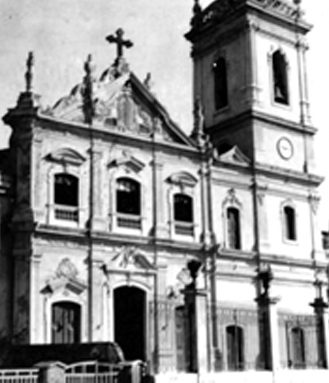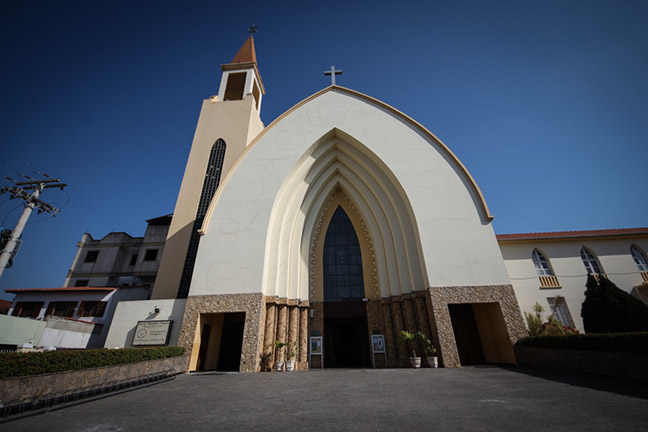On 25 January 2023, the Province of Rio (FJ2600) celebrates 100 years of Redemptorist Congregation presence in the city of Campo dos Goytacazes in the northern region of the state of Rio de Janeiro. A big celebration is planned to commemorate this date and to reflect on the meaning and impact of the Redemptorist charism in this region of Brazil.
According to Provincial Fr. Nelson Antonio Linhares, “the missionary spirit, which is the hallmark of Redemptorist identity, has been the pattern of our centenary presence in Campos dos Goytacazes. Jesus Christ, the Most Holy Redeemer, and the abandoned poor people, as the redeemed ones, were the poles that made us build the Church of Vatican II and make the laity truly ecclesial subjects in this region”.
The foundation of the Redemptorist house in Campos dos Goytacazes, Rio de Janeiro, was established on 25 January 1923. The Dutch Redemptorist religious settled in the premises of the Church of São Francisco de Assis, then administered by the Brotherhood of the Third Order of Saint Francis of Penance. These first missionaries started their apostolic work there, promoting the popular missions and preaching in chapels, villages and churches all over the north of Rio de Janeiro and in cities in Espírito Santo.
They stayed for about 27 years in this first house and even built a cave dedicated to Our Lady of Lourdes. The dwelling was in the narrow spaces of the choir and sacristies of the Church of San Francisco.
However, the pastoral realities of the quasi-parish soon showed the need for a religious house and church in the city that corresponded to the typical Redemptorist apostolate and lifestyle. In 1945, seeking greater autonomy for the work, the Redemptorist superiors in Rome sent a request to Brazil to the Dutch Redemptorists present in the city: “build your own church or leave the city of Campos”.
Around 1946, the Redemptorist missionaries began to mobilise the community to make the new construction possible by holding various events for the benefit of the new church, which would be dedicated to Our Lady of Perpetual Help. Many social events were held to raise the necessary money.
In 1948, work began, and the foundation stone was laid. The decision was taken to build the Missionaries’ house first. Even during the construction, masses began to be celebrated in the basement of this house. Therefore, both the house and the church (built later) were given the name “convent”, which designates the dwelling of the Redemptorists.
On 12 February 1950, at 9 a.m., Msgr Antônio de Castro Meyer, then Bishop of Campos, celebrated Holy Mass and blessed the new convent. After 27 years of Redemptorist presence, the new house was ready. Five years later, on 6 November 1955, the church in honour of Our Lady of Perpetual Help was inaugurated. The Dutch Redemptorist Fathers, Gabriel and Ambrósio, were in charge of the work.
However, it was only in 1996 that the church of the “Convent” was officially recognised as the Sanctuary of Our Lady of Perpetual Help, receiving diocesan approval.
A story of prophecy and faith!
Msgr Antonio de Castro Meyer, then bishop of Campos Dos Goytacazes, did not accept and opposed the Second Vatican Council. Therefore, for 20 years, the diocese remained pre-conciliar in its liturgical and ecclesial organisation. The Redemptorist missionaries played a fundamental role in the renewal of the church and in the formation of a new ecclesiological and liturgical consciousness. It was at the shrine of Our Lady of Perpetual Help that the lay people began to play their role as ecclesial subjects.
The Redemptorist missionaries created and supported pastoral ministers of the Eucharist, Altar servers, collaborators in liturgy, youth ministry, catechesis, and liturgical music. They also supported movements such as the Catholic League, the Legion of Mary, the Apostleship of Prayer, the prayer group, Cursillo de Cristiandad, and Couples Reunion. This legacy also opened ways for the diocese to reach 100 years of fidelity to the tradition of the church, assuming the laity as protagonists in pastoral action. I gratefully remember all the confreres who marked the Redemptorist presence in these lands over the years.
Praise the Blessed Redeemer for this history of prophecy and faith!
(provinciadorio.org.br)










